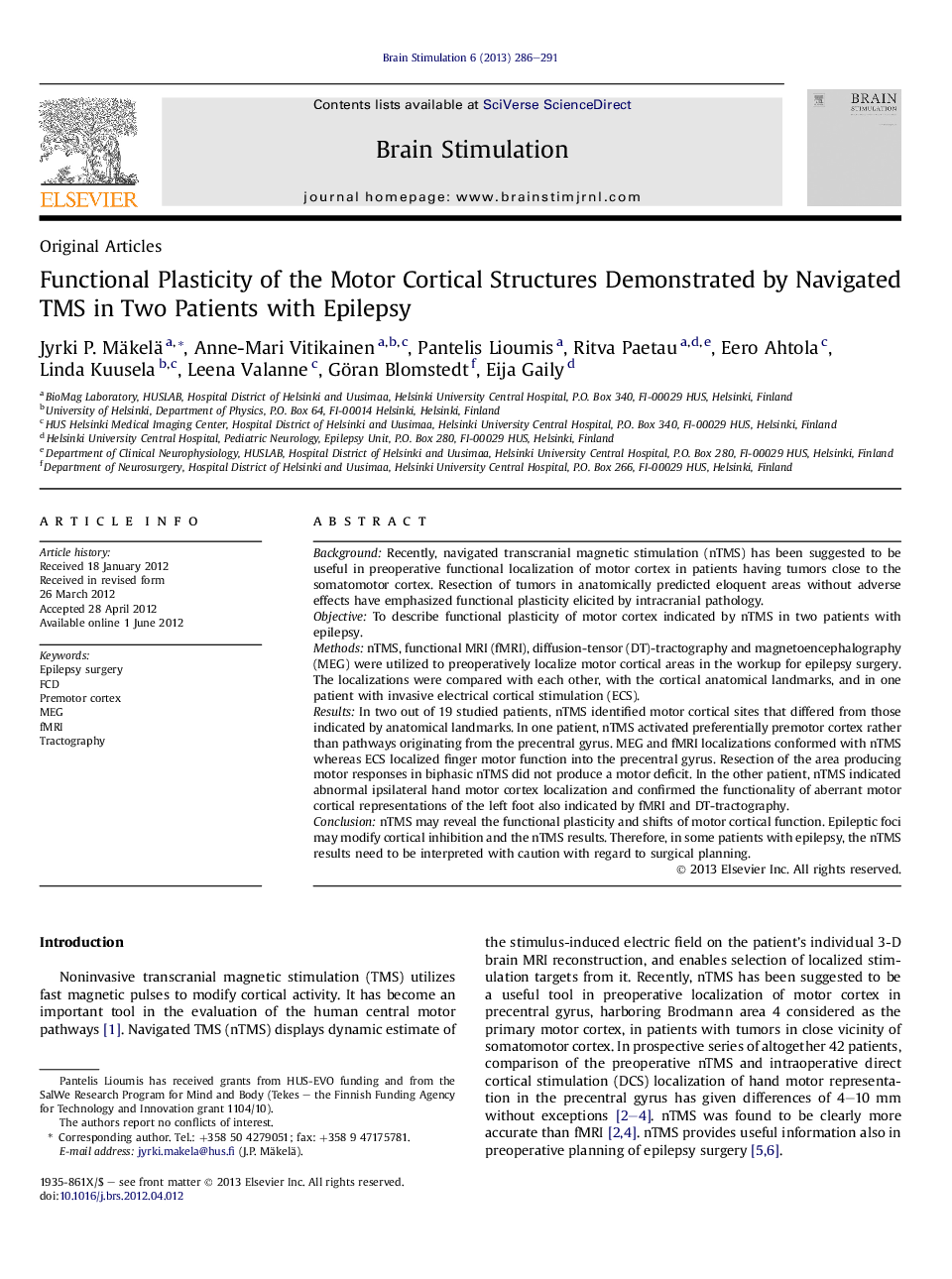| Article ID | Journal | Published Year | Pages | File Type |
|---|---|---|---|---|
| 3039009 | Brain Stimulation | 2013 | 6 Pages |
BackgroundRecently, navigated transcranial magnetic stimulation (nTMS) has been suggested to be useful in preoperative functional localization of motor cortex in patients having tumors close to the somatomotor cortex. Resection of tumors in anatomically predicted eloquent areas without adverse effects have emphasized functional plasticity elicited by intracranial pathology.ObjectiveTo describe functional plasticity of motor cortex indicated by nTMS in two patients with epilepsy.MethodsnTMS, functional MRI (fMRI), diffusion-tensor (DT)-tractography and magnetoencephalography (MEG) were utilized to preoperatively localize motor cortical areas in the workup for epilepsy surgery. The localizations were compared with each other, with the cortical anatomical landmarks, and in one patient with invasive electrical cortical stimulation (ECS).ResultsIn two out of 19 studied patients, nTMS identified motor cortical sites that differed from those indicated by anatomical landmarks. In one patient, nTMS activated preferentially premotor cortex rather than pathways originating from the precentral gyrus. MEG and fMRI localizations conformed with nTMS whereas ECS localized finger motor function into the precentral gyrus. Resection of the area producing motor responses in biphasic nTMS did not produce a motor deficit. In the other patient, nTMS indicated abnormal ipsilateral hand motor cortex localization and confirmed the functionality of aberrant motor cortical representations of the left foot also indicated by fMRI and DT-tractography.ConclusionnTMS may reveal the functional plasticity and shifts of motor cortical function. Epileptic foci may modify cortical inhibition and the nTMS results. Therefore, in some patients with epilepsy, the nTMS results need to be interpreted with caution with regard to surgical planning.
